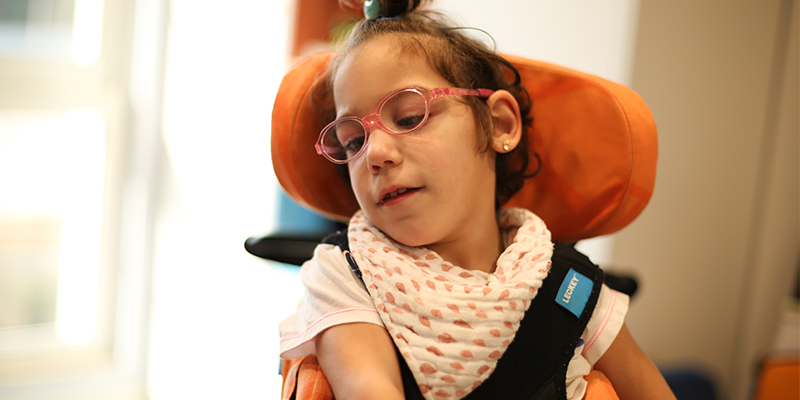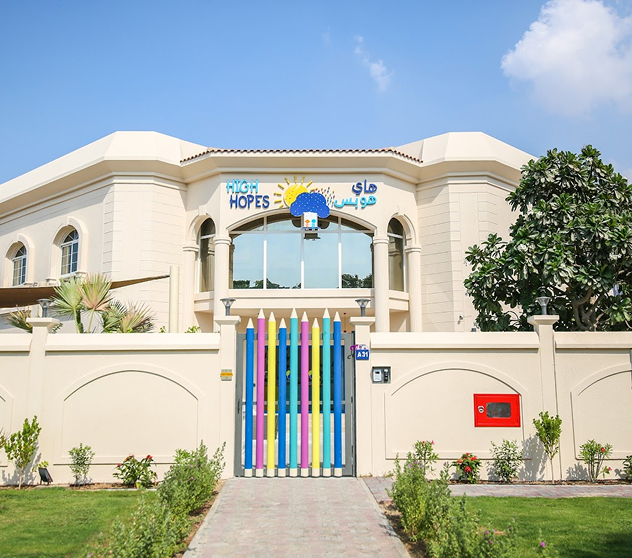Imagine sitting in a chair with a cushion that makes your right hip higher than the other, pushes your left leg further forward than your right leg, a backrest which is so small it squishes your shoulders forward into a rounded position and makes your head hang forward with your chin touching your chest. Doesn’t sound very comfortable, does it? This is exactly why we need to make sure our super special ones have the right supportive seating in place – to prevent this from happening!
Many of the children who visit us at HH have complex needs resulting in muscular and/or skeletal abnormalities. Some children have increased muscle tone, meaning that their muscles are working overtime. Others have low muscle tone, meaning they are floppy. Some have a combination of these in different areas of their bodies. Some children have spine specific abnormalities – curving too much to the right or left or forwards or backwards. Some have different leg lengths. On top of this, many of these children are not independently mobile and spend a lot of their time sitting in a car seat traveling between appointments or in a stroller or wheelchair during their day. With so much time spent sitting, we need to make sure they have the proper postural support to prevent further muscular or skeletal damage.
When considering seating support, we have options ranging from minimal to full customisable support. There are some key elements we need to ensure when choosing a seat:
- The child’s feet are supported on a stable surface. This could mean the child’s feet touch the floor or are resting on a footplate attached to their chair.
- The cushion/seat the child is sitting on reaches from behind their knees all the way back to their hips. This is called the seat depth.
- The child’s hips and lower back are seated all the way to the back of the cushion/seat and base of the backrest.
- The backrest is wide enough for their body to fit while sitting upright, without making their shoulders hunch forward.
For the average person, we would want to have comfortable seating which creates 90°angles at the ankles, knees and hips. However, this is not always the case with children with complex needs as they may not be able to physically get into these positions. If this is the case, we need to support the child for their best positioning to allow for comfortable sitting. We want to give more support rather than too little support. If we don’t give enough support, the child will have to recruit more muscles to maintain their posture which results in them getting tired much quicker and therefore not be able to fully engage in their daily routines and activities.
When working with your seating team (usually this would be Occupational Therapy and/or Physical Therapy), they will be considering all your child’s postural needs and make suggestions accordingly. Before ordering or trialling seating equipment, your therapist may want to take measurements of your child. Often this includes their hip width, seat depth (back of knees to sit bone), shoulder to seat length, torso width for the backrest and knee to floor. Not all equipment requires these measurements, but they are typically needed for equipment which provides full body support such as a stroller or wheelchair.
Your therapy team will assess what type of seating will be best for your child across different settings. Sometimes the type of support needed at school is different to the type of support needed in the home. They should discuss these needs with you and your child’s wider support team. Your therapist will look at the basic chair setup and then decide which features to add to the seating solution. Some of the features which could be used to help your child’s posture include:
- Using an angled cushion on the seat to tilt your child’s pelvis.
- Using a pommel (a raised piece of cushion between the legs) to stop your child’s legs from crossing over.
- A hip belt can be used to keep the hips back in the chair and prevent your child slipping forward.
- If your child does not have enough core strength to maintain an upright posture for prolonged periods while using the chair, lateral support should be used on either side of their chest.
- The seat should have arm rests which allow for their arms to rest with a 90°angle at the elbow joint if they will be spending time in the chair as their activity seat. Having arm rests also allows for a tray to be attached.
- A 5-point harness strap can be used to maintain an upright body position and keep shoulders upright.
- If your child does not have enough neck control to hold up their head for prolonged periods while using the chair, the chair should have head support. This may be a piece of foam for the head to rest against and may also include a strap to keep the head positioned upright and stop falling forwards.
- The chair itself might have a recline feature to help maintain head and trunk posture.
- Raised footrest for your child’s feet to rest comfortably on a stable surface.
In terms of the actual equipment being used, this varies from individual pieces to be placed onto a chair such as cushions and backrests through to customisable seats which are created using a 3D scanning system. Some systems are adjustable while others are fixed to a certain position. Some systems will have regular foam cushioning and others may have special pressure-relieving foam. Your therapist can help to explain why different elements are recommended above others.
It is very important to work alongside your therapists to make decisions on your child’s seating needs. If you would like assistance to choose a supportive seating system for your child, please speak with a therapist from our Occupational Therapy or Physical Therapy departments. We would be happy to help!




